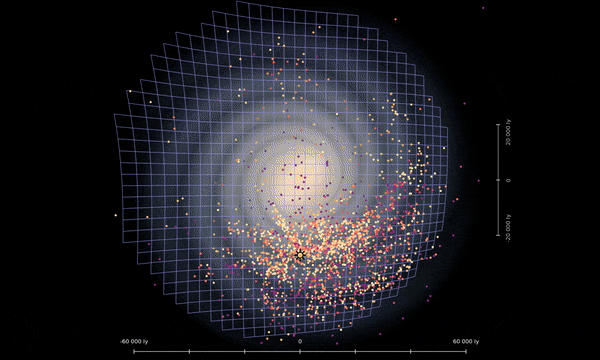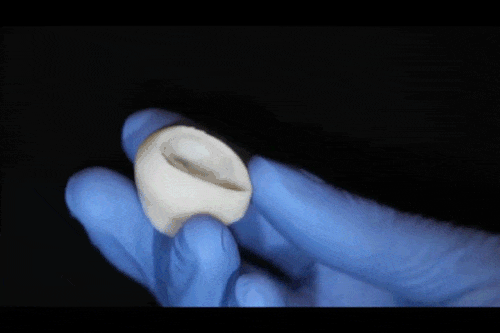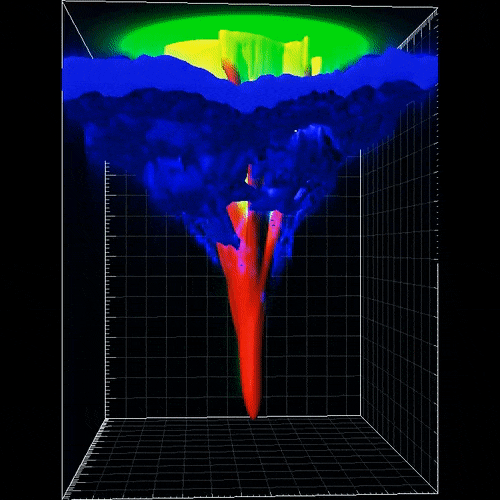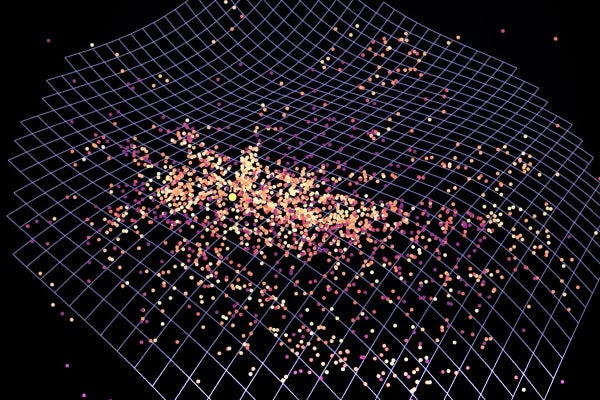You probably know the GIF as the perfect vehicle for sharing memes and reactions. We believe the format can go further, that it has real power to capture science and explain research in short, digestible loops.
So each Friday, we’ll round up the week’s most GIF-able science. Enjoy and loop on.
The Little Robot That Wouldn’t Die
On supporting science journalism
If you're enjoying this article, consider supporting our award-winning journalism by subscribing. By purchasing a subscription you are helping to ensure the future of impactful stories about the discoveries and ideas shaping our world today.
.gif)
This may be the only situation in which being compared to a cockroach is a compliment. In fact, that comparison is exactly what a team of researchers in China and the U.S. were after: the scientists wanted to build a tiny, nimble robot with the uncanny robustness of a roach.
The real-life American cockroach can squeeze through a crack the height of two stacked pennies and resist crushing forces up to 900 times its body weight. The new work sought to imbue those abilities into a “curved unimorph piezoelectric structure”—a wisp of material that can respond to an applied current by doing a kind of bendy shuffle kick. This tiny robot can move at a speed of 20 body lengths per second (“the fastest measured among published artificial insect-scale robots,” according to the researchers’ study) and withstand a 59.5-kilogram foot stomp.
The roach-inspired bot may one day be able to crawl through the rubble of a toppled building to find survivors, so you just might want to thank a real cockroach the next time you see one.
Read the study here.
The Milky Way in 3-D

We live in a warped world, galactically speaking. Researchers in Poland, England and the U.S. have figured out a way to map our bent, twisted Milky Way in three dimensions. To do so, they used cepheids (young supergiant stars that are bright enough to measure reliably through galactic dust and distance) as a set of more than 2,400 tracking points in space. Those points also let the scientists rewind the cosmic clock to figure out when the cepheids were born—and why it is that some of them have strayed from the arms of the spiral galaxy that birthed them.
Read the study here.
Reach Out and Touch a Bot
.gif)
Remember those human-controlled robot suits in Avatar, The Matrix or dozens of other sci-fi movies? Well, real human-machine interfaces don’t work anything like that, but new research does show a more seamless way to control a robot—and to get feedback from one.
Scientists in the U.S. and China built a wearable, patchlike device that can remotely control a robotic hand via the wearer’s natural movements. It is described in their study as “ultrathin, mechanically imperceptible, and stretchable.” And its thickness is just four microns, about half as wide as a strand of spider silk.
Sensors embedded in the device measure strain, temperature and ultraviolet exposure, whether on a person’s skin or on a robot, where it acts as a sensing “skin.” Connecting two copies of the device sets up a “closed loop” in which the robot monitors electrical signals in the wearer’s muscles and moves accordingly, and the wearer’s skin senses what the robot touches. When the bot and wearer shake hands, things get pretty meta, which is why we are showing that action as an infinite loop above.
Read the study here.
Slightly Better Heart Parts

This week, researchers at Carnegie Mellon University delivered the “freshest” update on 3-D-printed organs. In 2015 the same team created what it called “FRESH”—a novel method to print collagen, which is a protein that makes up about 30 percent of the human body. The new release is called FRESH v2.0, an improved technique that can print multiple biomaterials (even human heart cells) with 10 times the detail of the original FRESH.
The team’s method uses a modified 3-D printer that pushes out fine ribbons of collagen into a semisolid goop (“a gelatin microparticle slurry,” as the scientists put it in their paper), which supports the collagen as the organ is being printed. When the collagen hits the goop—which has a much higher pH—it begins to solidify. After the entire structure is printed, the goop can be melted away to leave behind a pristine collagen model.
Now able to print ultrafine details 0.02 millimeter across, the researchers printed a whole collagen heart equivalent to that of a newborn infant, complete with ventricles, veins and arteries. They also printed parts for an adult heart, including the valve shown above, and hope this method will someday be used for a wide range of organs.
Read the study here.
Spinning Molecule or Magical Mystery Tour?
.gif)
Credit: DESY and Evangelos Karamatskos
This GIF may look like something out of an acid-inspired Beatles movie, but it is actually something called the “quantum carpet”of a spinning molecule. Sounds even trippier, right?
This week German and Danish researchers produced what they call the first “molecular movie,” with carbonyl sulfide (a linear molecule) in the starring role. It is a short feature: the molecule dances its 1.5 rotations in just 125 trillionths of a second (0.000000000125 second). The researchers spun the molecule with two coordinated laser pulses and imaged it with a third pulse, which strips electrons off the molecule, breaks it into fragments and gives a read on its position. This “coulomb explosion” destroys the involved molecule to get just one still image, so the researchers had to repeat the process 651 times and layer the pictures together like a quantum flip-book.
Things get weird in the quantum realm, so it occasionally appears that the molecule points in many directions simultaneously. This phenomenon occurs because the “quantum carpet” can only show the probability that the molecule is at a certain point at a certain time (see: Heisenberg’s uncertainty principle). Even this imagery, however, can give us otherwise unseen information about the dynamics of molecules.
Read the study here.
A Fang for What Ails You

Shots are vital in modern health care, but traditional hypodermic needles strike fear into the hearts of many. Now researchers in South Korea have developed a promising alternative: a patch covered in miniscule needles inspired by snake fangs. The patch is intended to be nearly painless; these microneedles, such as the one modeled above, are only a fraction of a millimeter long. With a few seconds of gentle pressure, the patch delivers medicine through tiny holes in the skin; the grooved “fangs” allow liquid to flow freely. The scientists successfully used it to deliver a flu vaccine and a painkiller to mice, and they hope to move forward with larger animal and human trials soon.
Read the study here.
Want more science GIFs? Here you go.
